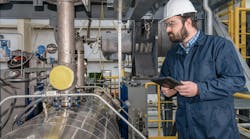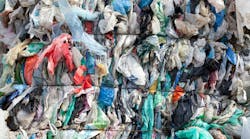Meanwhile, chemical depolymerization, which uses chemicals to produce monomers by unzipping polymers, is generally used to break down PET, especially colored or textured PET that is inappropriate for mechanical recycling.
Currently, plants using thermal processes have much lower capacity than those using chemical processes, according to the ICIS writers — Andrea Bassetti, Americas team lead, plastics recycling; Corbin Olson, senior analyst, plastics recycling; and Joshua Dill, analyst, plastics recycling.
According to statistics available on the America's Plastic Makers website of the American Chemistry Council Inc., research has shown that advanced recycling could reduce fossil energy use by 97 percent compared to landfilling, and pyrolysis emits 50 percent less carbon dioxide than incineration. Manufacturing low-density PE (LDPE) derived from pyrolysis also results in significantly less emissions than production involving virgin LDPE.
But because of the nature of the processes, scale-up takes time.
“We are doing it fast, but it's a chemical process. You do want to be safe, you do not want to blow up, you do not want to poison the environment,” said Appelman, who stressed the safety practices within the chemicals industry.
“We sometimes forget that the chemical industry is actually one of the safest industries in terms of injuries.”
He described his company’s technology as a mix of heat and chemistry. At the high temperatures required for pyrolysis, recyclers are stuck with many components of plastics chemistry that require costly further processing.
In contrast, Aduro’s process combines relatively modest temperature and catalysis and water as a coreactant, unlocking a different chemical pathway than pyrolysis.
“It is really waste plastic. It is really dirty. There’s a lot of contaminants in there. There are many different plastics, polyethylene, polypropylene, PET, whatever. Within those categories, you have variations, like LDPE and HDPE, but within that, you have even more variations with different melt flow grades, which make the whole mechanical recycling extremely challenging,” Appelman said.



